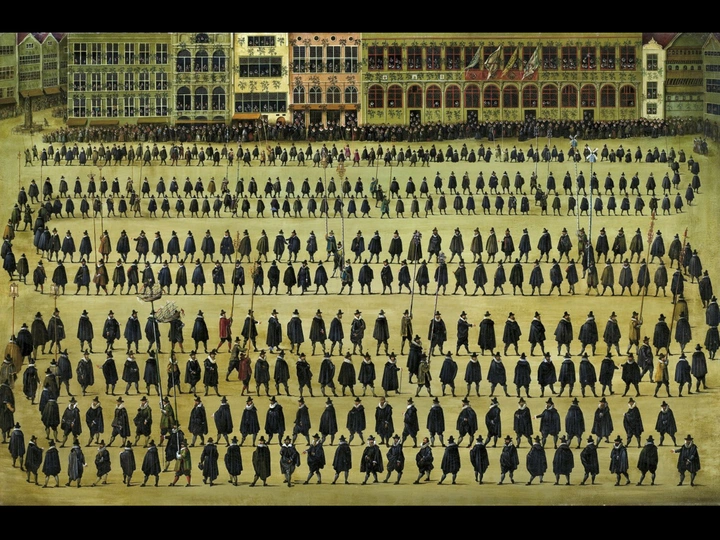Ritual Assemblages

Pablo Castillo is a Canary-Islands-born architect. His design and written work explores the intersection of time, ritual, and architecture. In 2020, Pablo co-founded à la sauvette, an architecture practice dedicated to design, research, and cultural production from a civic and social perspective. Their work on celebrations in the public space, understood as political tools for visibility, has engaged with local and international audiences in conversations, exhibitions, and publications. Their book, Bailar La Ciudad, recently won the Spanish Architecture and Urbanism Biennial in the research category.
Pablo graduated from the MArch II program at Harvard Graduate School of Design and has taught architecture at Rhode Island School of Design and Wentworth Insititute of Technology.
Architecture embodies a desire for permanence. Designed as static, it slowly solidifies societal and cultural values into built form. However, in our rapidly changing society, the built environment cannot keep up with our contemporary rituals. Despite the assumption that once construction ends, buildings are stable until they get renovated, changed, or demolished, aiming for immutability contradicts its material performance. Architectural elements change over time and building materials decay: wood expands and contracts with humidity changes, stone erodes with water, metals rust and fatigue. But, instead of resisting these conditions, engaging with them offers the potential to embrace future change.
This research has two main objectives: the first one is to critically assess our contemporary social values by researching rituals as a litmus test that marks the boundaries of our value systems. The second objective is to challenge the common understanding of architecture as permanent and engage with dynamic agents of change –decay, process, construction, deconstruction, use patterns, etc.—to reassess some of the core values of practice. How would we understand the social aspects of labor, maintenance, or preservation if we rethink architecture’s permanence through the ritual? The misalignment between the temporality and frequency of the rituals and the lifespan of the architecture presents itself as an opportunity for design and social engagement. To achieve that, this project leverages the central concept of the “assemblage” in two directions: first, as a sociological idea and second, as a material technique. The twofold meaning of this concept implies instability and heterogeneity in temporary unions between people, between materials, and between people and materials.